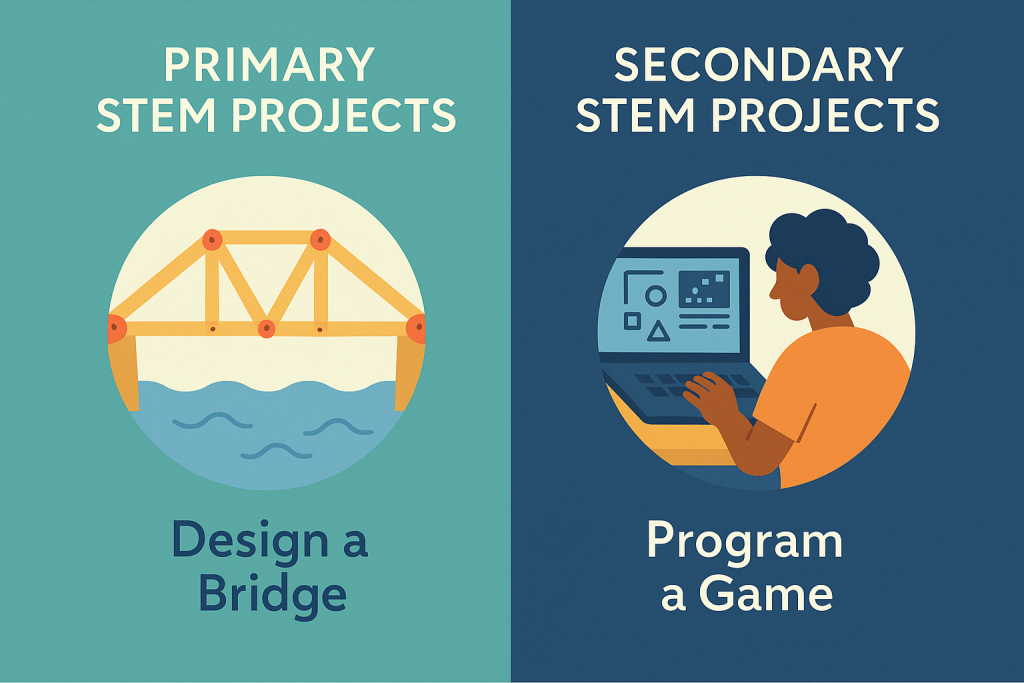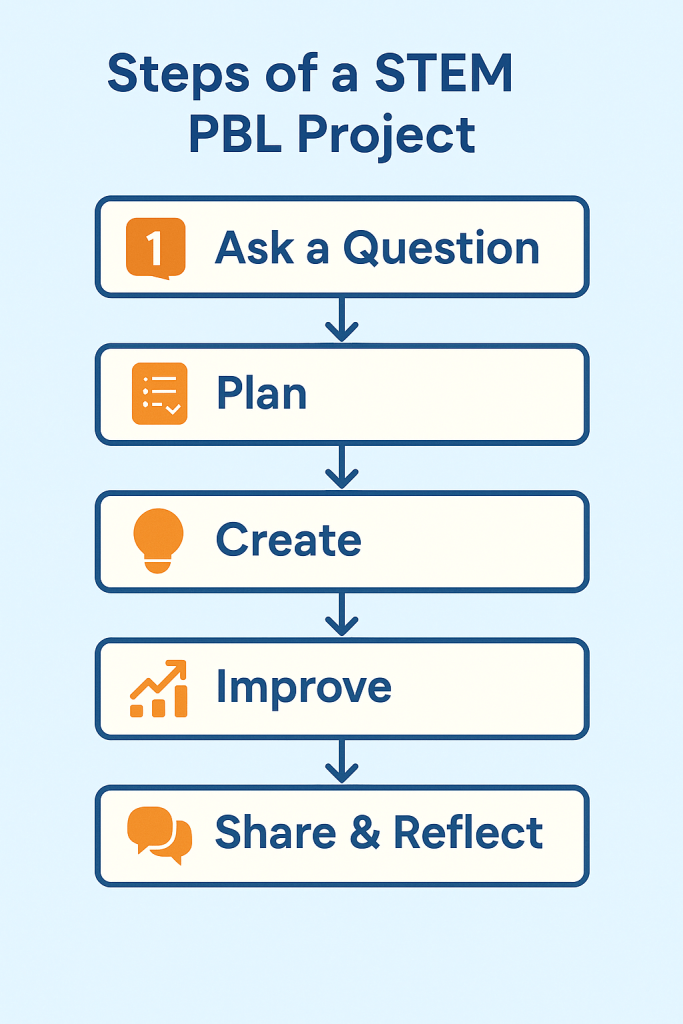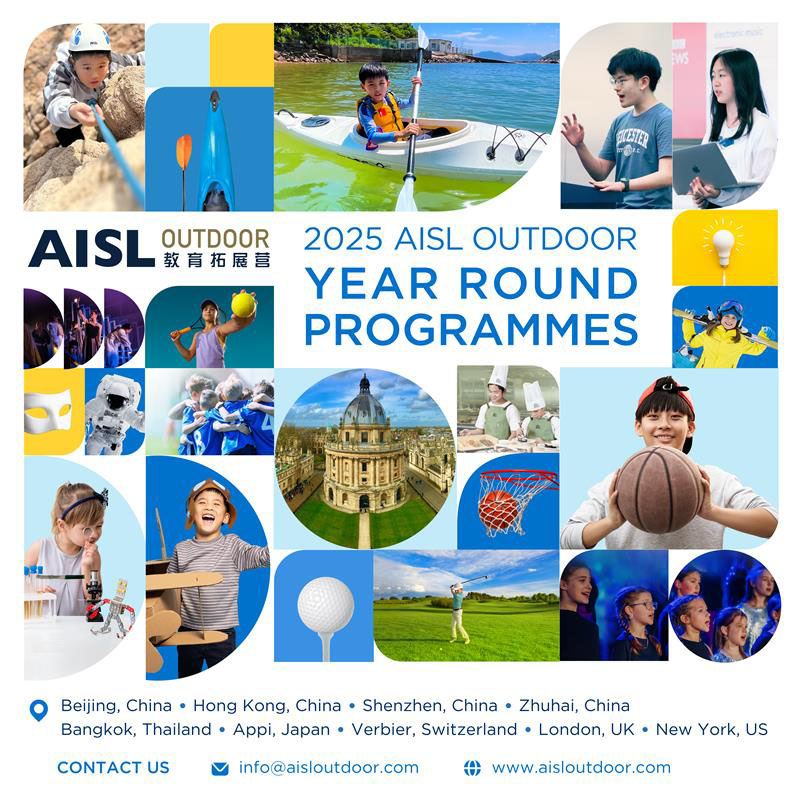STEM project-based learning (PBL) is gaining momentum across international schools, and for good reason. It’s an approach that blends science, technology, engineering, and maths into hands-on, inquiry-driven experiences that reflect real-world problem solving. From building a solar-powered oven in primary school to designing an app in secondary, STEM PBL helps students connect their learning to practical challenges while building collaboration and creativity along the way.
But knowing where to start can be tricky. What makes a STEM project successful? How do you design one that aligns with your curriculum and supports deeper learning? This guide offers practical tips, examples, and classroom strategies to help you create meaningful STEM learning experiences, no matter your students’ age or your starting point.
What Is STEM Project-Based Learning?
STEM project-based learning combines the principles of inquiry, hands-on experimentation, and interdisciplinary thinking. At its core, it asks students to investigate real-world problems and develop creative, often collaborative solutions using science, technology, engineering, and mathematics. Unlike traditional instruction, which separates these subjects into silos, STEM PBL connects them through meaningful projects that mirror real-life challenges.
This approach not only reinforces subject knowledge, it nurtures essential 21st-century skills such as problem-solving, adaptability, and teamwork. Whether students are designing eco-friendly transport prototypes or analysing water quality in their local community, the aim is to make learning relevant, active, and integrated.
Why It Works for International Curricula
STEM PBL fits naturally within many international curricula frameworks, including the IB, IPC, and Cambridge Primary and Lower Secondary programmes. These models already emphasise inquiry, student agency, and cross-curricular learning, making project-based approaches a logical next step.
In classrooms with diverse learners, STEM PBL also creates opportunities for differentiation. Students can take on roles that match their strengths, such as coding, building, or presenting, and contribute meaningfully to a shared goal. The collaborative structure promotes inclusion, while the problem-solving nature of projects allows students to apply learning in a context they find personally engaging.
What Are the Benefits of STEM Project-Based Learning?
Building Real-World Relevance
One of the standout advantages of STEM PBL is its ability to connect classroom concepts to the outside world. Rather than learning scientific theories or mathematical equations in isolation, students see how these ideas apply to everyday challenges. Whether designing a model of a sustainable city or coding an app to track local weather patterns, learners are more engaged when they understand the why behind what they’re doing.
Developing Transferable Skills
STEM PBL naturally promotes key skills that students will need long after school. These include:
- Critical thinking and problem-solving
Students must evaluate data, weigh options, and justify decisions. - Collaboration and communication
Projects typically involve teamwork, requiring students to listen, negotiate, and present ideas clearly. - Creativity and innovation
Open-ended challenges encourage original thinking and multiple solutions. - Resilience and adaptability
When prototypes fail or data doesn’t fit expectations, students learn to iterate and improve.
Supporting Inclusive and Differentiated Learning
STEM PBL allows students to demonstrate their strengths in a range of ways. A student who struggles with written assessments may excel in visual design or hands-on construction. Others may shine in leadership, planning, or research roles. With proper scaffolding, this model encourages participation from all students, making it a strong tool for inclusive education in both primary and secondary contexts.
Adapting STEM PBL for Different Age Groups
Primary School Learners (Ages 5–11)
In the early years, the goal is to spark curiosity and introduce structured problem-solving in playful, age-appropriate ways. STEM projects for primary students should be simple, tactile, and closely tied to observable phenomena. For example:
- Design a Bridge using popsicle sticks to explore strength and shape.
- Grow a Plant under different conditions to introduce the scientific method.
- Build a Weather Station to track daily temperatures or rainfall.
Projects at this level often benefit from strong visual elements, short timeframes, and teacher-guided scaffolding. Storytelling, games, and classroom discussion help students connect STEM with everyday life.
Secondary School Students (Ages 12–18)
Older students can take on more complex and self-directed challenges that mimic real-world STEM careers. These might include:
- Developing a Sustainable Product using design thinking.
- Programming a Simple Game or App to solve a local issue.
- Running a Climate Change Investigation using global datasets.
In secondary school, students are capable of handling interdisciplinary learning that blends physics with art or biology with business. Teachers can incorporate project management tools, research expectations, and peer feedback to prepare students for university-style inquiry.

Key Elements of Effective STEM PBL
Real-World Relevance
Successful STEM projects are rooted in real-world contexts that matter to students. Whether it’s designing a water filter for communities without clean water or building a model of an energy-efficient home, relevance increases motivation and deepens understanding. The more students can see how STEM applies beyond the classroom, the more engaged they become.
Cross-Curricular Connections
STEM PBL naturally blends disciplines. A robotics project might involve physics (motion), maths (measurement), coding (technology), and art (design). Look for opportunities to align projects with broader curriculum goals across subjects, which helps students make meaningful connections and reinforces knowledge.
Student Voice and Choice
Letting students guide aspects of the project, such as the topic, design approach, or presentation format, fosters ownership and creativity. When learners are involved in decision-making, they’re more invested in the outcome and develop stronger problem-solving and collaboration skills.
Structuring a STEM Project from Start to Finish
Step 1: Define the Driving Question
Every good STEM project begins with a compelling question that challenges students to explore, investigate, or solve a problem. For example: How can we reduce plastic waste in our school? or What design makes the strongest paper bridge? A clear, open-ended question gives purpose to the project and sets the stage for inquiry.
Step 2: Plan and Scaffold
Break the project into manageable phases, research, design, testing, and reflection. Provide templates, timelines, and checkpoints to help students stay organised. Scaffold complex tasks with mini-lessons on specific skills such as using digital tools, collecting data, or presenting results.
Step 3: Encourage Iteration
STEM learning thrives on trial and error. Build in time for students to revise designs or test new approaches based on feedback. This iterative mindset not only mirrors real-world innovation but also nurtures resilience and deeper learning.
Step 4: Showcase and Reflect
End with a presentation, prototype, or demonstration that allows students to share their work. Pair this with a reflection session, what worked, what didn’t, and how they might improve next time. This final step reinforces learning and helps build communication and metacognitive skills.

Assessing STEM Learning Beyond the Final Product
Focus on the Process
In STEM project-based learning, assessment should value the process just as much as the end result. Look at how students approach problems, work in teams, adapt to challenges, and apply creativity. Consider using rubrics that track effort, inquiry, teamwork, and reflection, not just the finished product.
- Evaluate planning, problem-solving, and iteration
- Encourage journaling or logs to document progress
- Use check-ins and peer feedback during the project
Include Self and Peer Assessment
Teaching students to evaluate their own learning helps build metacognitive skills. Invite them to reflect on their strengths, struggles, and what they would do differently next time. Peer feedback also builds communication and critical thinking.
- Use exit slips or self-assessment forms at key milestones
- Allow peer feedback during presentations or showcase events
- Frame assessment around growth, not just achievement
Bringing STEM Learning to Life
STEM project-based learning offers a powerful way to connect classroom concepts with real-world challenges. By focusing on creativity, collaboration, and curiosity, you can help students build lasting skills for the future. For more tools, lesson ideas, and educator resources, visit AISL Mall.










